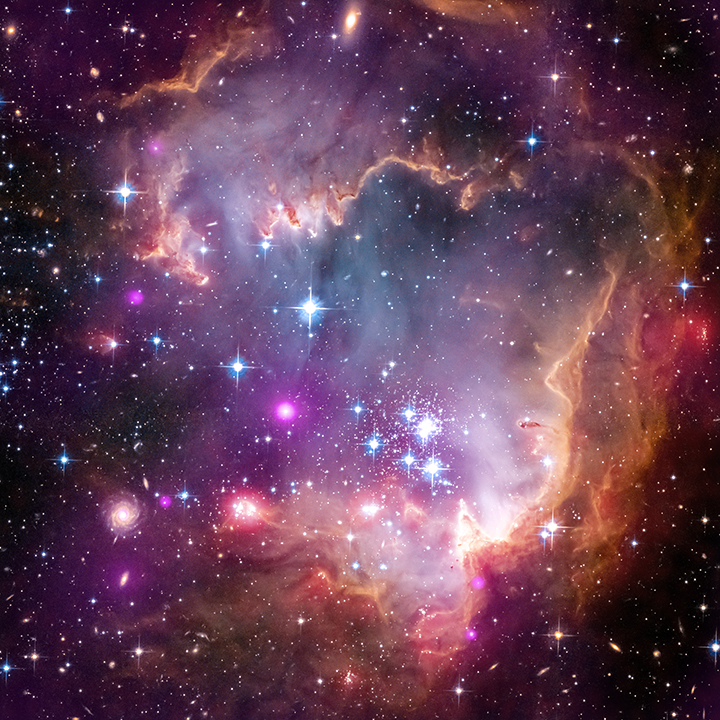NGC 602
180,000 light years

Image Credit: X-ray: NASA/CXC/Univ. Potsdam/L. Oskinova et al.; Optical: NASA/STScI; Infrared: NASA/JPL-Caltech
This galaxy is so bright in the southern night sky that navigators for centuries have used it to help guide them across the ocean. Modern telescopes reveal there is much more to this object than just being a bright prick of light seen from sea. This image combines three different types of light to give us this spectacular view of this neighboring galaxy to the Milky Way. In this view of the so-called Small Magellanic Cloud (named after Ferdinand Magellan), X-ray light is purple, infrared light is red, and optical light is red, green, and blue. Together, these different slices of light give us a more complete picture of a stellar nursery where stars like our Sun are being born.
Listen to audio version (English)
Download high-res image file | Download caption as .zip file
NGC 602 - 180,000 años luz de la Tierra
Esta galaxia es tan brillante en el cielo austral nocturno que los navegantes durante siglos la han utilizado para ayudar a guiarlos a través del océano. Los telescopios modernos revelan mucho más sobre este objeto que apenas aparenta ser un punto de luz brillante visto desde el mar. Esta imagen combina tres tipos diferentes de luz para darnos esta espectacular vista de esta galaxia vecina de la Vía Láctea. En esta vista de la llamada Pequeña Nube de Magallanes (el nombre de Fernando de Magallanes), la luz de rayos X es de color púrpura, la luz infrarroja es de color rojo y la luz óptica es de color rojo, verde y azul. En conjunto, estas diferentes bandas de luz nos dan una imagen más completa de una guardería estelar donde están naciendo estrellas como nuestro Sol.
Download high-res image file | Download caption as .zip file



